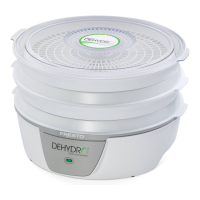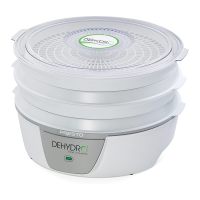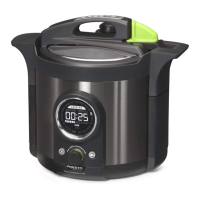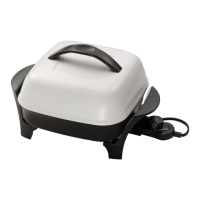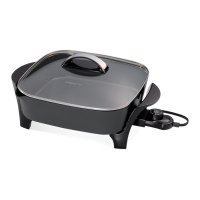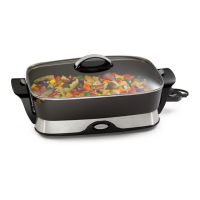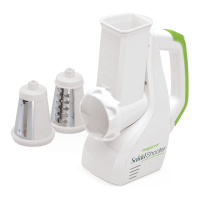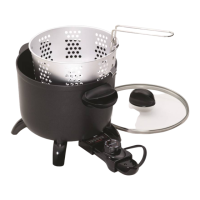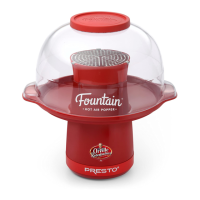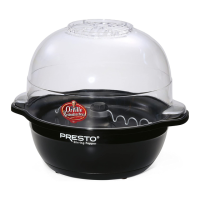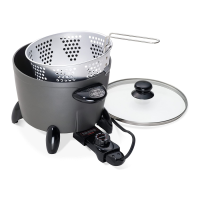9
Summer
squash and
zucchini
Trim ends. Cut into ¼˝ slices. Water 1½ minutes
Steam 2½–3 minutes
3–5 hours
Tomatoes Peel if desired. Cut into sections ¾˝ wide. None 5–10 hours
Packaging and Storing Dried Food
• Dried foods need to be properly packaged to prevent reabsorption of moisture and microbial deterioration. Pack food in clean, dry,
airtight containers. Glass jars or freezer containers with tight-fitting lids are good for storage. Resealable plastic freezer bags are
also acceptable.
• Store packaged dried food in a dry, cool location away from light. Higher temperatures and exposure to light will shorten the
storage time and result in loss of quality and nutrients. Most dried fruit, when properly packaged and stored, will be good for
1 year at 60°F or 6 months at 80°F. Fruit rolls should keep for up to 1 month at room temperature. Vegetables have about half the
storage life as fruit. If food is to be kept longer, then store it in a freezer.
• Package vegetables and fruits in separate storage containers to avoid flavor transfer.
Tips for Reconstituting and Using Dried Foods
Fruit:
Dried fruits make great snacks. They also can be used as ingredients in trail mixes, cereals, mufns, breads, and other baked products.
Dried fruits can be used as is or softened prior to use. To soften dried fruits, submerge in boiling water and soak for 5 minutes or place
fruit in a steaming basket over a pot of boiling water and steam for 5 minutes or until fruit is plumped.
Vegetables:
Dried vegetables have a unique avor and texture. They are best used as ingredients for soups, stews, casseroles, and sauces rather
than stand-alone side dishes. Dried vegetables can also be pulverized into akes or powders using a blender. The akes or powders can
then be added to enhance the avor of other foods.
When using dried vegetables in soups, they may be added without soaking. Dried vegetables used for other purposes need to be
soaked before cooking. To soak, start with 1½ to 2 cups of boiling water for every 1 cup of dried vegetables. Soak for 1 to 2 hours or
until vegetables have returned to nearly the same size they were before dehydrating. Vegetables that have been blanched will reconsti-
tute more quickly than unblanched.
Additional water should be added as needed during the soaking process. After soaking, simmer the vegetables in the soaking water
until tender, allowing excess water to evaporate.
Dehydrating Recipes
Jerky Marinade
§
1½–2 pounds of lean meat/poultry
¼ cup soy sauce
1 tablespoon Worcestershire sauce
1 teaspoon hickory smoke avored salt
½ teaspoon onion powder
¼ teaspoon garlic powder
¼ teaspoon black pepper
Combine meat, soy sauce, Worcestershire, salt, onion powder, garlic powder, and pepper in a small
bowl.
Follow “Preparing Jerky from Meat/Poultry Strips” instructions on page 4.
§
Jerky Marinade recipe provided by “So Easy To Preserve”, 6th ed., 2014 Bulletin 989, Cooperative Extension Service,
The University of Georgia, Athens. Revised by Elizabeth L. Andress, Ph.D. and Judy A. Harrison, Ph.D., Extension
Foods Specialists.
